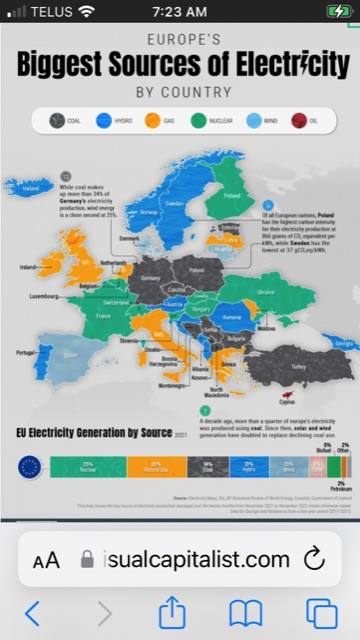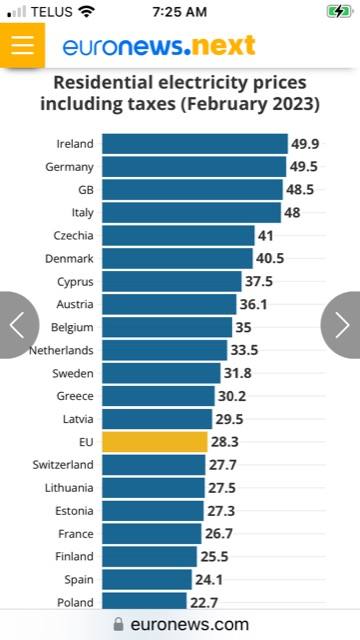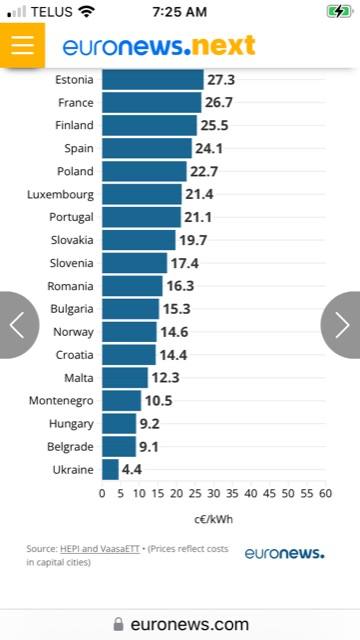https://energy5.com/understanding-alberta-current-power-rates-what-you-need-to-know
The Impact of Renewable Energy on Alberta Power Rates: An Overview
If you live in Alberta, Canada, you may have noticed your power rates have been fluctuating. This is due, in part, to the growing prevalence of renewable energy sources in the province. Renewable energy is energy generated from sources that can be naturally replenished, such as solar, wind, hydroelectric, and geothermal power. As the use of renewable energy increases, it's important to understand its impact on power rates in Alberta.
Renewable Energy in Alberta
Renewable energy has been gaining traction in Alberta in recent years. In 2017, the province announced a goal to generate 30% of its electricity from renewable sources by 2030. This goal was later increased to 50% in 2019. To achieve this target, Alberta has implemented various policies and programs to encourage the growth of renewable energy, such as:
The Renewable Electricity Program, which invites proposals for new renewable energy projects through a competitive process.
The Climate Leadership Plan, which includes a price on carbon and an accelerated phase-out of coal-fired electricity generation.
The Micro-Generation Regulation, which allows Albertans to generate their own electricity from renewable sources and sell any excess power back to the grid.
Impact on Power Rates
The growing use of renewable energy in Alberta has had a noticeable impact on power rates. While it's difficult to determine the exact amount of this impact, there are several factors that contribute to the relationship between renewable energy and power rates:
Low operating costs: Renewable energy sources such as wind and solar have low operating costs compared to traditional fossil fuel sources, which can lead to lower power rates.
Increased competition: With the introduction of the Renewable Electricity Program, there has been increased competition among renewable energy providers, which can lead to lower rates.
Infrastructure costs: While renewable energy sources may have low operating costs, the infrastructure costs associated with building and maintaining renewable energy facilities can be high. These costs may offset some of the savings from operating costs.
Market fluctuations: Power rates in Alberta are subject to market fluctuations, which may be influenced by factors such as oil prices, weather patterns, and supply and demand. These factors can impact the relationship between renewable energy and power rates.
Key Takeaways
The growing use of renewable energy in Alberta has had a noticeable impact on power rates, influenced by variables such as low operating costs, increased competition, infrastructure costs, and market fluctuations. As renewable energy continues to play a larger role in the province's energy mix, it's important for Albertans to understand the relationship between renewable energy and power rates.
Overall, the impact of renewable energy on power rates in Alberta is a complex issue. While it can lead to lower rates in some cases, there are also factors that may offset these savings. As the province continues to strive towards its renewable energy goals, it's important to carefully consider the impact on power rates and work towards achieving a sustainable and affordable energy future.
The Impact of Renewable Energy on Alberta Power Rates: An Overview
If you live in Alberta, Canada, you may have noticed your power rates have been fluctuating. This is due, in part, to the growing prevalence of renewable energy sources in the province. Renewable energy is energy generated from sources that can be naturally replenished, such as solar, wind, hydroelectric, and geothermal power. As the use of renewable energy increases, it's important to understand its impact on power rates in Alberta.
Renewable Energy in Alberta
Renewable energy has been gaining traction in Alberta in recent years. In 2017, the province announced a goal to generate 30% of its electricity from renewable sources by 2030. This goal was later increased to 50% in 2019. To achieve this target, Alberta has implemented various policies and programs to encourage the growth of renewable energy, such as:
The Renewable Electricity Program, which invites proposals for new renewable energy projects through a competitive process.
The Climate Leadership Plan, which includes a price on carbon and an accelerated phase-out of coal-fired electricity generation.
The Micro-Generation Regulation, which allows Albertans to generate their own electricity from renewable sources and sell any excess power back to the grid.
Impact on Power Rates
The growing use of renewable energy in Alberta has had a noticeable impact on power rates. While it's difficult to determine the exact amount of this impact, there are several factors that contribute to the relationship between renewable energy and power rates:
Low operating costs: Renewable energy sources such as wind and solar have low operating costs compared to traditional fossil fuel sources, which can lead to lower power rates.
Increased competition: With the introduction of the Renewable Electricity Program, there has been increased competition among renewable energy providers, which can lead to lower rates.
Infrastructure costs: While renewable energy sources may have low operating costs, the infrastructure costs associated with building and maintaining renewable energy facilities can be high. These costs may offset some of the savings from operating costs.
Market fluctuations: Power rates in Alberta are subject to market fluctuations, which may be influenced by factors such as oil prices, weather patterns, and supply and demand. These factors can impact the relationship between renewable energy and power rates.
Key Takeaways
The growing use of renewable energy in Alberta has had a noticeable impact on power rates, influenced by variables such as low operating costs, increased competition, infrastructure costs, and market fluctuations. As renewable energy continues to play a larger role in the province's energy mix, it's important for Albertans to understand the relationship between renewable energy and power rates.
Overall, the impact of renewable energy on power rates in Alberta is a complex issue. While it can lead to lower rates in some cases, there are also factors that may offset these savings. As the province continues to strive towards its renewable energy goals, it's important to carefully consider the impact on power rates and work towards achieving a sustainable and affordable energy future.



Comment